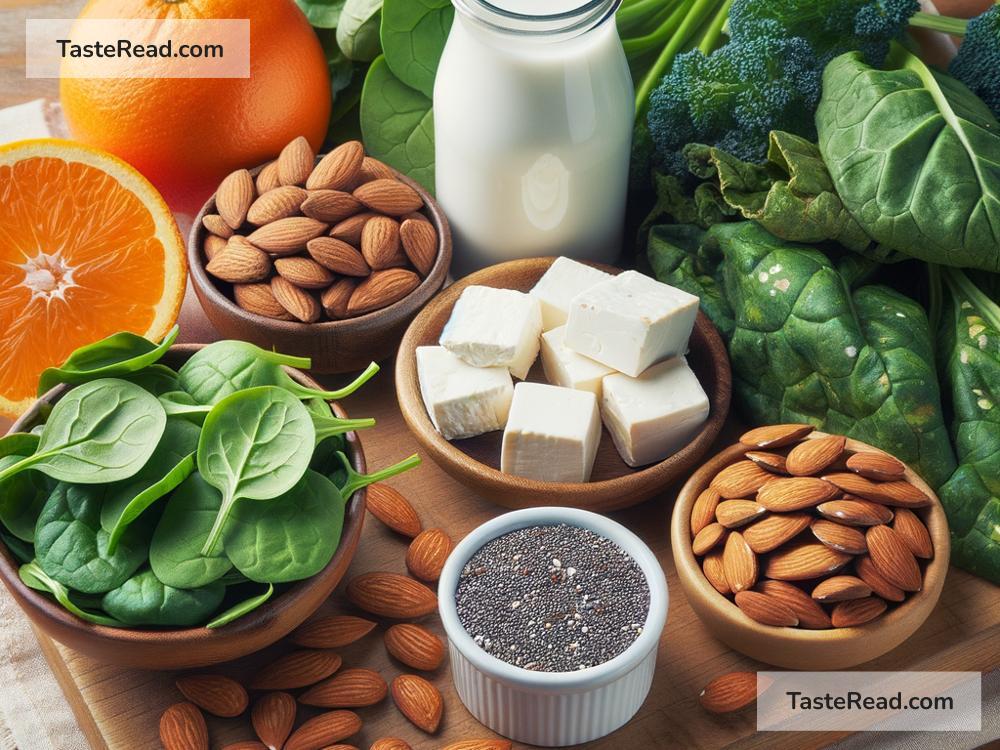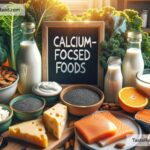Foods That Enhance Calcium Absorption: A Simple Guide to Strong Bones
We all know that calcium is crucial for our bodies. It helps keep our bones strong, our teeth healthy, and even supports muscles, nerves, and the heart. But here’s the thing: consuming calcium-rich foods alone isn’t enough. Our body needs help to absorb calcium properly, and thankfully, there are foods that can enhance calcium absorption. Let’s explore these foods in simple, easy-to-understand terms.
Why Is Calcium Important, and How Do We Absorb It?
Calcium isn’t just about building bones—it plays a vital role in basic body functions. Without it, muscles can’t contract, nerves can’t send signals, and blood can’t clot. However, calcium absorption is no simple task. Your body needs certain vitamins and minerals to absorb calcium from your food and make the most of it.
Here’s a key player: Vitamin D. This vitamin is like the “door” that lets calcium into your bloodstream. Without enough Vitamin D, no matter how much calcium-rich food you eat, your body can struggle to use it. Other nutrients, like magnesium and Vitamin K, also help the process.
Foods That Help Your Body Absorb Calcium
You’re probably thinking, “What should I eat to make sure my body absorbs calcium properly?” Good news—many everyday foods contain nutrients that help your body absorb more calcium. Let’s break them down:
1. Vitamin D-Rich Foods
Vitamin D is a superstar when it comes to calcium absorption. You can find it in foods like:
- Fatty fish: Salmon, mackerel, and tuna are great sources of Vitamin D.
- Eggs: Especially the yolks!
- Fortified foods: Some milk, orange juice, and cereals have added Vitamin D. Check the label to make sure.
Your body can also make Vitamin D naturally when exposed to sunlight. Spending just 15–30 minutes in the sun a few times a week can help—but don’t forget to protect your skin with sunscreen if you’re outside for long periods.
2. Magnesium-Rich Foods
Magnesium helps regulate calcium levels in the body and is a supportive partner in calcium absorption. It’s found in:
- Leafy greens: Spinach, kale, and Swiss chard are magnesium powerhouses.
- Nuts and seeds: Almonds, cashews, and sunflower seeds are loaded with magnesium.
- Whole grains: Foods like brown rice, quinoa, and oatmeal are excellent sources as well.
- Avocado: This creamy fruit is also rich in magnesium and can add a tasty twist to your meals.
3. Vitamin K-Rich Foods
Vitamin K, particularly Vitamin K2, is vital for ensuring calcium ends up in your bones rather than in places where it shouldn’t, like your arteries. Good sources of Vitamin K include:
- Fermented foods: Natto (fermented soybeans) is especially high in Vitamin K2.
- Leafy greens: Kale, spinach, and broccoli all contain Vitamin K.
- Cheese: Some cheeses, like Gouda, also contain Vitamin K2.
4. Foods High in Prebiotics and Probiotics
A healthy gut can improve calcium absorption, and prebiotics and probiotics support your gut health. Great foods for this include:
- Yogurt: Especially those with “live cultures” listed on the label.
- Kefir: A fermented drink similar to yogurt, full of probiotics.
- Bananas: A good source of prebiotics, which feed the healthy bacteria in your gut.
- Onions and garlic: Prebiotic-rich veggies to include in your dishes.
5. Proper Pairings for Calcium-Rich Foods
Sometimes it’s about pairing the right foods together. For example:
– Adding lemon juice to leafy greens: The Vitamin C in lemons helps the body absorb calcium better.
– Combining calcium-rich foods with Vitamin D sources: Pair fortified cereal with milk or salmon with broccoli to maximize absorption.
What to Avoid: Foods and Habits That Block Calcium Absorption
While focusing on foods that help absorb calcium, it’s also important to know what may block or hinder absorption. Here are things to watch out for:
- Excessive caffeine: Drinking a lot of coffee or tea can reduce calcium absorption.
- Too much salt: A high-sodium diet causes calcium loss through urine.
- Soft drinks: Phosphates in sodas can interfere with calcium absorption.
- Oxalates and phytates: Found in foods like spinach or bran, these compounds can bind to calcium and reduce absorption. Spinach is healthy but not the best calcium source.
Putting It All Together
To build strong bones and make sure your body absorbs calcium properly, try incorporating foods like fatty fish, leafy greens, nuts, and yogurt into your diet. Pair calcium-rich foods with Vitamin D-rich options or magnesium-rich ingredients to make the most of your meals. Don’t forget that lifestyle factors, like getting enough sunlight and avoiding excessive caffeine or salt, can also make a big impact.
In short, eating a wide variety of whole, nutrient-rich foods is the simplest—and tastiest—way to enhance calcium absorption and keep your body healthy.
Final Thoughts
Calcium is a star nutrient, but its co-stars—Vitamin D, magnesium, and other nutrients—are just as important. By eating the right foods, pairing them thoughtfully, and maintaining a balanced lifestyle, you’ll be supporting your bones, teeth, and overall health.
So next time you’re looking to boost your calcium intake, think beyond the usual glass of milk. Explore new ways to combine and enjoy nutrient-packed foods that help your body absorb calcium like a pro. Your bones will thank you!


